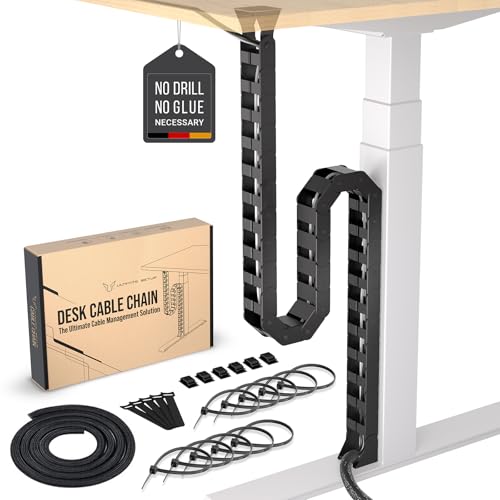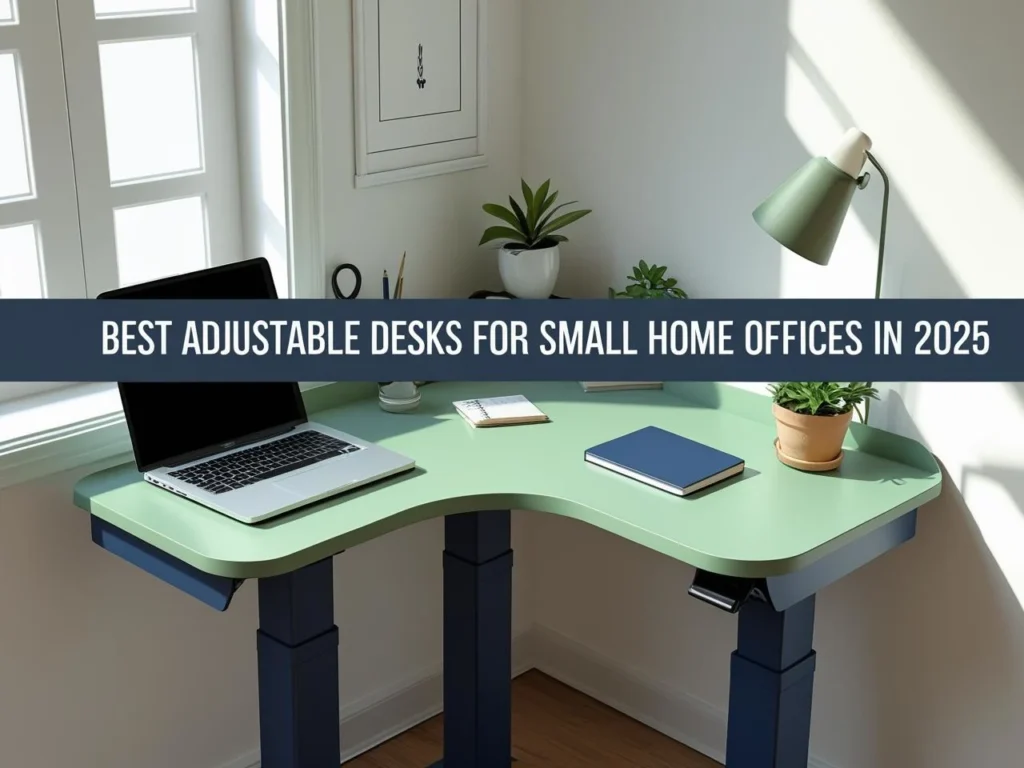Nothing ruins the sleek look of an adjustable desk faster than a messy bundle of tangled cables. And when your desk moves up and down, poor cable management can lead to snags, wear, or even damage to your equipment. This guide shows you exactly how to achieve clean, safe cable management that moves seamlessly with your desk.
Why Cable Management Is Important for Standing Desks
Poor cable management isn’t just an eyesore—it’s a productivity killer. When investing in adjustable standing desks, you want the full benefits without the chaos of loose wires.
Messy cables create several problems. They pose tripping hazards when you’re moving around your workspace. Tangled cords can get caught in the desk mechanism, potentially damaging equipment or preventing smooth height adjustments. Plus, visual clutter affects your mental focus more than you might realize.
I’ve seen too many people avoid using their sit-stand desk because dealing with the cable mess felt overwhelming. Don’t let poor cord management defeat the purpose of your ergonomic investment.
When cables are properly organized, users feel confident adjusting desk height without worrying about equipment damage or connectivity issues. This freedom encourages regular position changes, supporting the health advantages that motivated the standing desk investment.
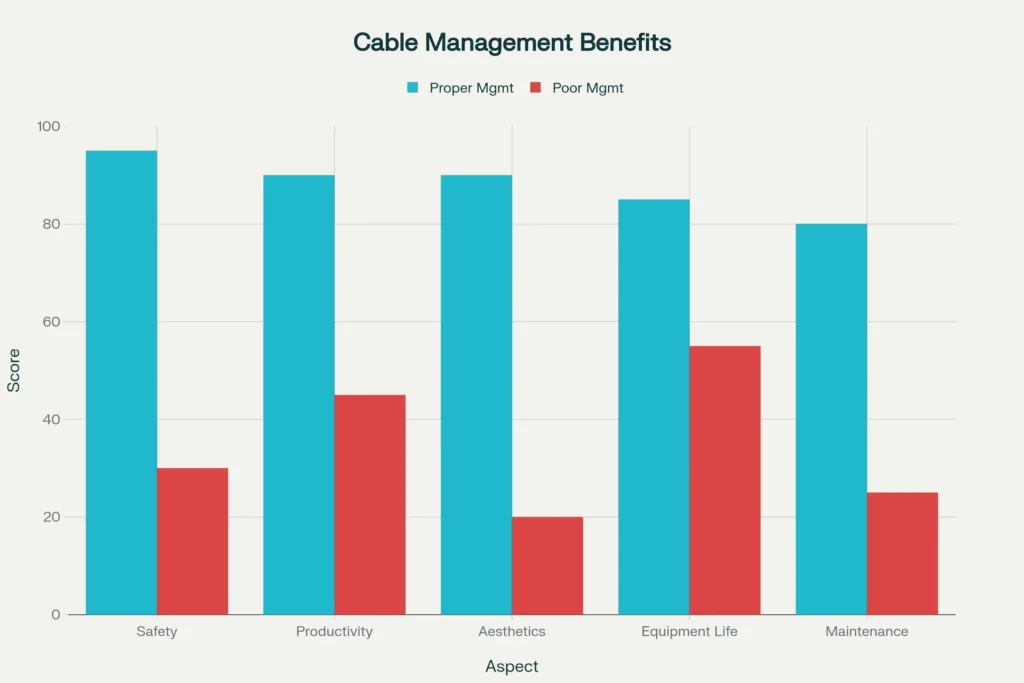
How to Cable Management for Standing Desk: The Step-by-Step Process
Start With a Cable Audit
Before buying any cable management tools, take inventory of what you’re working with. Count your power cords, USB cables, monitor connections, and any specialty wires for peripherals.
Group cables by function: power cables in one pile, data cables in another, and audio/video cables separately. This helps you choose the right management solutions for each cable type.
Measure the distance your cables need to travel when the desk is at its highest and lowest positions. This measurement is crucial—many people underestimate how much extra cable length moving desks require.
Choose Your Cable Management Strategy
The best approach depends on your desk type and cable volume. For most standing desks, a combination of under-desk trays and flexible cable guides works best.
Under-desk cable trays keep power strips and adapters organized while moving with your desk. Look for trays that mount securely to your desk frame rather than the wall.
Cable spines or guides handle the vertical cable run from your desk to wall outlets or floor-mounted power sources. These flexible systems bend and stretch as your desk moves.
Adhesive cable clips manage individual cables along your desk edges and legs, preventing them from swaying or catching.
- Maximum flexibility: the cable management under desk vertebrae can be shortened and moved silently as desired
How to Hide Cords Standing Desk: Concealment Techniques
The Under-Desk Approach
Mount a cable management tray directly under your desk surface. This keeps power strips, USB hubs, and cable excess completely out of sight while ensuring everything moves together.
The VIVO adjustable cable tray system works particularly well for this approach. It attaches to most desk frames and provides a hidden compartment for power management. The tray stays level as your desk adjusts, preventing cables from sliding around.
Position your power strip inside the tray with outlets facing toward the back. This arrangement keeps plugs secure and makes it easier to access when needed.
Managing the Vertical Cable Run
This is where most people struggle with standing desk cable management. Your cables need to travel from the desk to wall outlets or floor power sources while accommodating the desk’s full range of motion.
Use a vertebrae-style cable management system for this vertical run. These articulated guides flex and bend as your desk moves, keeping cables organized without restricting movement. The Under-Desk Cable Management system with vertebrae design handles this challenge effectively.
Install the guide so cables have slight slack at both extreme positions—fully raised and fully lowered. Too tight, and you’ll stress the cables. Too loose, and you’ll have cable sag that looks messy.
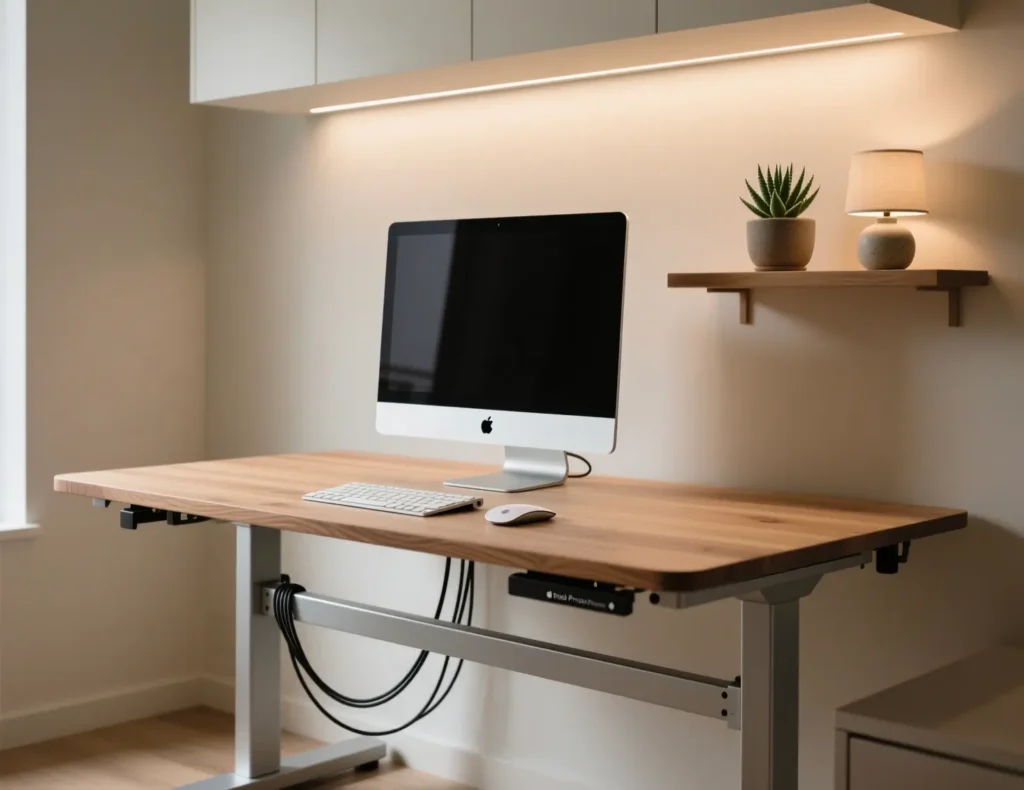
Best Cable Management for Standing Desk: Product Recommendations
For Heavy Cable Loads
If you have multiple monitors, external drives, and various peripherals, invest in a robust under-desk cable tray system. Look for trays with weight ratings that exceed your power strip and adapter load by at least 50%.
The key feature to prioritize is mounting versatility. Your tray should attach to different desk frame styles without requiring specific mounting points.
For Minimalist Setups
Simple setups with a laptop, monitor, and few peripherals can get by with cable clips and a basic vertebrae guide. Focus on clean lines rather than heavy-duty management systems.
Adhesive cable clips work well for routing individual cables along desk edges. Choose clips sized appropriately for your cable thickness—too large, and cables will slip out during desk movement.
What Reddit Users Recommend
The standing desk cable management reddit community consistently recommends focusing on flexibility over rigid solutions. Fixed cable runs that work fine at one desk height often fail catastrophically when you adjust the desk.
Popular solutions mentioned include IKEA’s cable management accessories (budget-friendly), J Channel cable raceways (professional look), and various 3D-printed custom solutions for specific desk models.
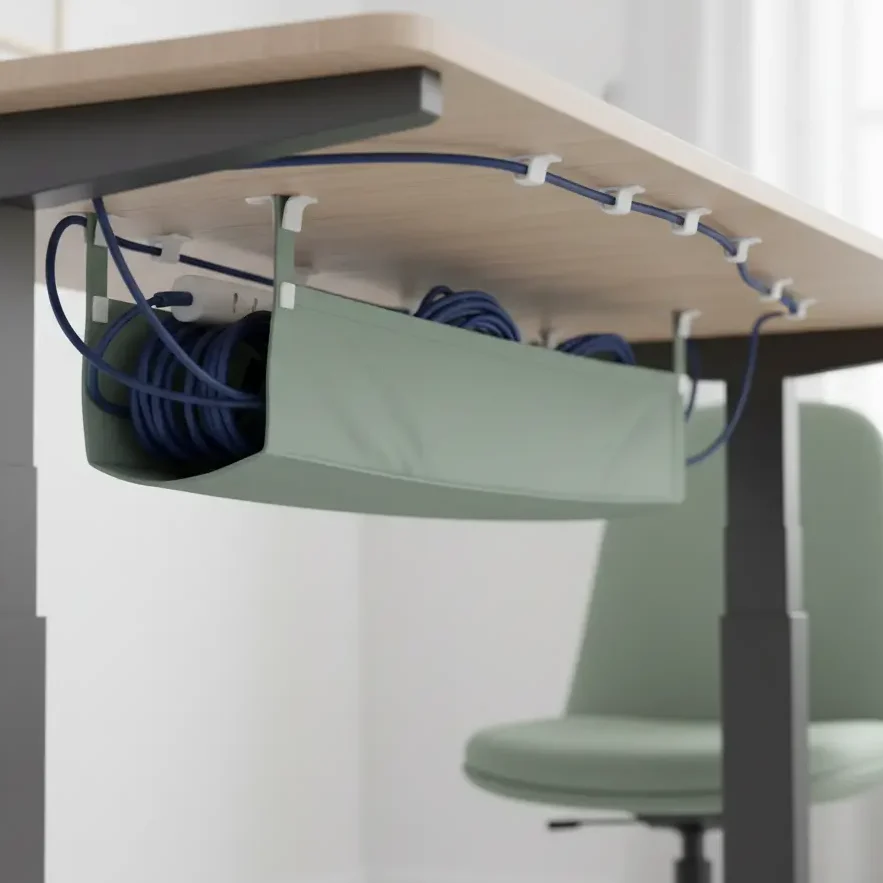
Standing Desk Cable Management Ideas: Creative Solutions
The Cable Slack Loop Method
Create intentional loops in your cables at the point where they transition from moving desk to stationary wall or floor. These loops provide the extra length needed for desk movement without creating permanent slack.
Position loops behind or under your desk where they’re hidden but accessible. Use velcro ties to maintain loop shape and prevent cables from unwinding during desk adjustments.
Magnetic Cable Holders
For desks with metal frames, magnetic cable holders offer flexible positioning without permanent mounting. These work especially well for temporary cable routing or when you’re still experimenting with optimal cable paths.
Place magnetic holders at stress points where cables bend or change direction. This prevents wear and keeps cables following your intended path.
Custom Cable Channels
Some users create custom cable channels using simple materials like cable raceways or even PVC pipe. While this requires more effort, it provides a completely customized solution that matches your specific desk and cable needs.
Desk Cable Management Tips: Pro-Level Organization
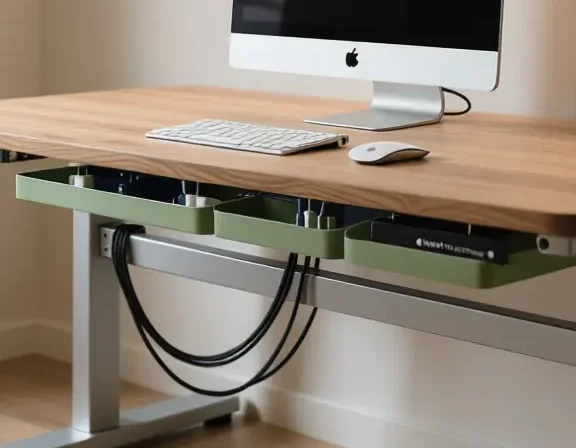
Plan for Future Changes
Don’t design your cable management system around your current exact setup. Leave room for additional cables, new devices, or equipment changes.
Over-spec your cable management capacity by about 30%. It’s much easier to have unused space in your cable tray than to rebuild everything when you add a new monitor or peripheral.
Label Everything
Use a label maker or write-on cable ties to identify cables. This saves enormous time when troubleshooting connections or making changes to your setup.
Include both the source and destination in your labels: “Monitor 2 – USB-C” or “Desk Power – Wall Outlet 3.” This level of detail prevents confusion during maintenance.
Test the Full Range
Before considering your cable management complete, test your desk through its full height range multiple times. Adjust cable positions if you notice any binding, excessive tension, or loose sections.
Pay special attention to the transition zones where cables move from the desk to stationary mounting points. These areas experience the most stress and require the most careful planning.
How to Do Desk Cable Management: Implementation Steps
Phase 1: Preparation (30 minutes)
Disconnect all cables and clean your desk thoroughly. Take photos of your current cable connections before disconnecting—this saves time during reconnection.
Mount your primary cable management components (trays, guides, clips) while the desk is clear. It’s much easier to access mounting points without cables in the way.
Phase 2: Power Management (45 minutes)
Install your power strip in the under-desk tray or designated power zone. Route power cables first, as these are typically the thickest and least flexible.
Connect power for your desk motor and any other components that require constant power, regardless of your computer’s power state.
Phase 3: Data and Signal Cables (30 minutes)
Route monitor cables, USB connections, and audio cables through your management system. Group similar cables together but avoid bundling power and data cables too closely.
Leave slight slack at connection points to prevent stress on connectors during desk movement.
Phase 4: Testing and Adjustment (15 minutes)
Reconnect all devices and test functionality. Cycle your desk through its full height range while everything is connected and running.
Make final adjustments to cable routing, tension, and clip positions based on actual movement behavior.
Final Thoughts on Standing Desk Organization
Effective cable management transforms your adjustable desk from a functional necessity into a clean, professional workspace. The key is planning for movement and choosing flexible solutions over rigid ones.
Start with the basics—a good under-desk tray and flexible cable guide—then add specialized solutions as needed. Remember that perfect cable management isn’t achieved overnight. It’s an iterative process that improves as you understand your desk’s movement patterns and your workflow needs.
Try dedicating 15 minutes each Friday to tidying your cable management and making small improvements. This habit keeps your workspace organized and helps you spot potential issues before they become problems.
Looking for more workspace organization tips? Check out our complete guide to optimizing your home standing desk setup for maximum productivity.
About the Author: Jordan Hayes is a productivity and home office consultant with 8+ years of experience helping people create efficient workspaces. He has personally tested over 100 cable management solutions to find what actually works in real-world home office environments.

